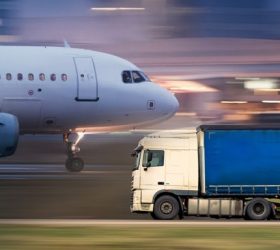Every year, road traffic accidents cost business over 72 billion dollars in the US. That’s a lot of money. And what is even more sobering is that this number could be significantly higher.
 Cameras give us the ability to contest fraudulent claims and settle those where the company is liable promptly and efficiently. As a result, they have been a huge help to any organisation that manages a significant fleet of vehicles.
Cameras give us the ability to contest fraudulent claims and settle those where the company is liable promptly and efficiently. As a result, they have been a huge help to any organisation that manages a significant fleet of vehicles.
But don’t we have this the wrong way round?
Conventional camera and telematics technology focuses on exoneration. It helps us deal with the fallout from accidents. That’s fine, and as noted above, it is helpful. But couldn’t we do more? How about getting serious about the huge costs that accidents incur, by preventing them from happening in the first place?
Does that sound fanciful? It shouldn’t. Because there is an industry, we are all familiar with that has successfully reduced accidents (certainly fatal accidents) down to close to zero. That industry is commercial aviation. Nobody in aviation suggests that some accidents just happen. If they did, they would not be in aviation for long.
But what, precisely, can we learn from aviation? I think, broadly speaking, two things. In the rest of this piece, we will look at each in turn.
Active, dynamic warning systems
In the unlikely event that you find yourself piloting a commercial airliner, you will notice that it makes great efforts to stop you from making a mistake. Go too slowly, and you will hear an audible warning suggesting you speed up. Fly too close to the ground, and the words “Terrain. Pull up” will echo around the cockpit. Turn too sharply and prepare to hear “bank angle”. You get the idea.
What is happening here? Quite simply, the avionics of the airplane understand when it is being flown in an unsafe manner and intervene. Or to look at it another way, whilst the black box helps us find out what happened after the fact, the systems of the plane do their very best to process all the data available to them and prevent accidents from happening.
There is no reason why we cannot do the same for fleets of road vehicles. In fact, not doing so, when between cameras and telematics we have a whole host of live data that can ‘see’ risks as they emerge, seems actively perverse. Fortunately, as we will see below, that is changing.
Personalised pilot training
Airlines are not generally keen on pilots who make mistakes. That is why pilots must train continually and regularly demonstrate their competence to fly. But training goes beyond a one-size-fits-all approach.
Every flight is actively monitored, and when pilots demonstrate risky behaviour or display a lack of familiarity with one specific aspect of their job, intervention occurs. That intervention takes the form of specific training designed to ensure that each individual works on their weaknesses, and that the safety of the fleet is improved.
Again, we have that data too. We can see near misses (literally) and telematics can identify driving habits that are less than optimal. Yet until now, this type or personal training hasn’t been available to road fleets. Why not?
What it takes
Two reasons stand out, and (spoiler alert) neither of them still applies for fleets investing in the latest technology.
The first is the ability to read and act on data without human intervention. This is the big one. Until now, fleet managers have collected huge amounts of data, and the idea that they would look through them for any reason other than accident, fraud or theft was highly fanciful. It’s just too much of a job looking through thousands of data points to find patterns, and it just isn’t possible to do that in the moment – to warn the driver before an accident occurs.
But with advances in machine learning and artificial intelligence, this is no longer the case. A system like CameraMatics isn’t simply recording data. It is constantly learning, and constantly informing both drivers and managers about where things can be improved. That applies in real-time too. A system that knows what a cyclist in a blind spot looks like, and correctly identifies a manoeuvre about to put that cyclist at risk, can step in and warn the driver. An accident prevented.
In the same way, the ability to learn from huge data sets enables driver training and feedback to be entirely automated. The fleet manager need do nothing (although he or she can keep an eye on the process of course). It just happens. If there is one thing to take from this article, it is this: cameras and telematics are not the solution (although they are a necessary part of it). What makes safety and accident prevention possible is the ability to interpret and act on data automatically, in real-time.
That just leaves the second reason, which is straightforward: attitude. If you continue to see accidents as ‘a fact of life’, you’re going to continue spending millions on dealing with the aftermath of those accidents.
Better to learn from our friends in aviation. Prevention is better than cure.







